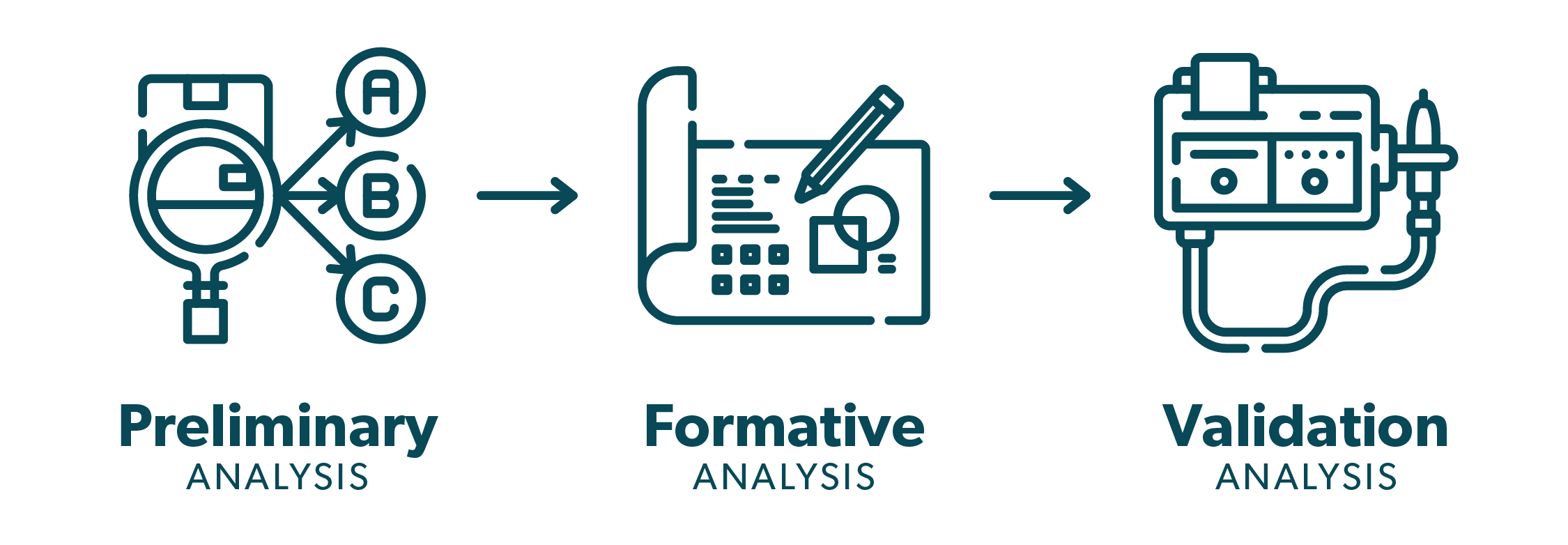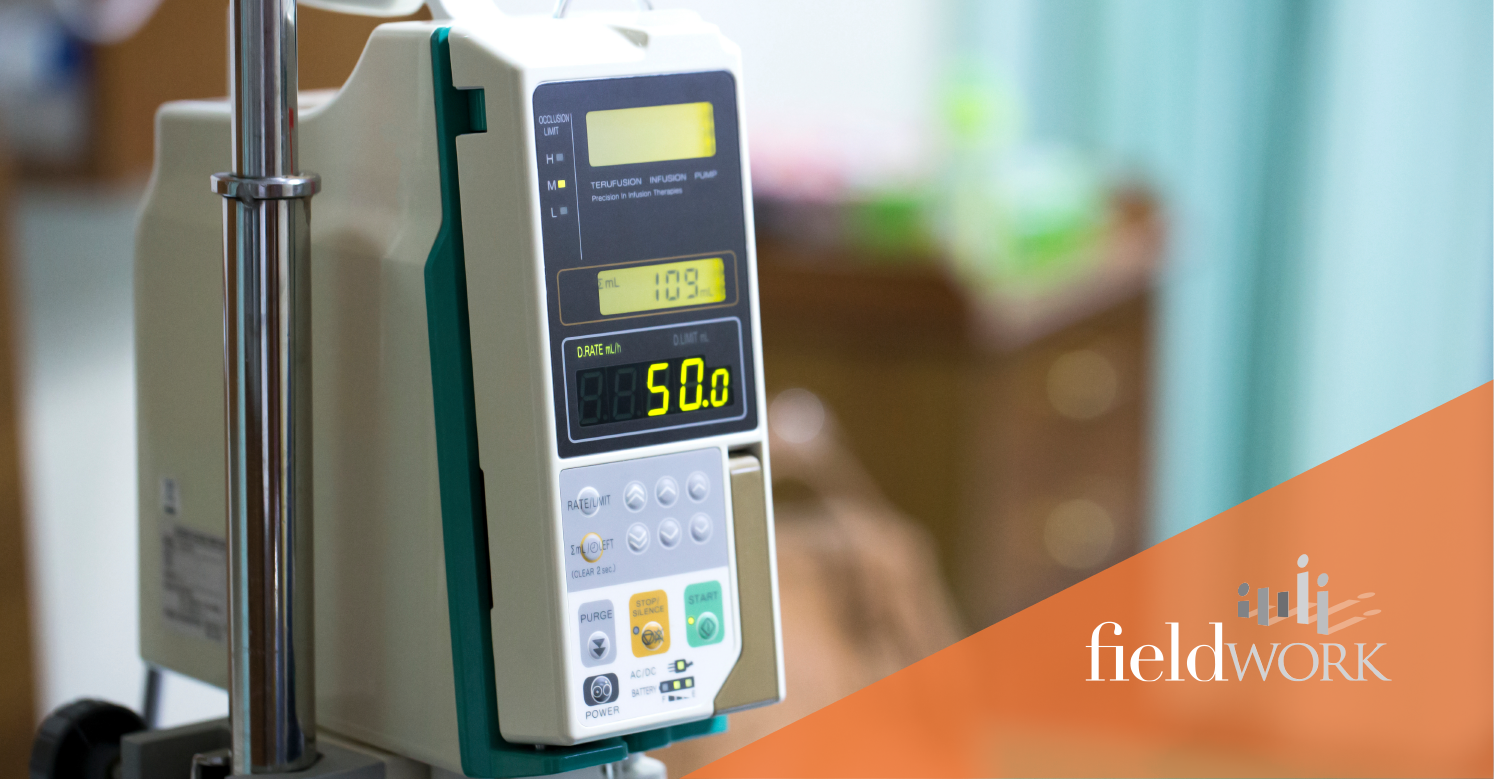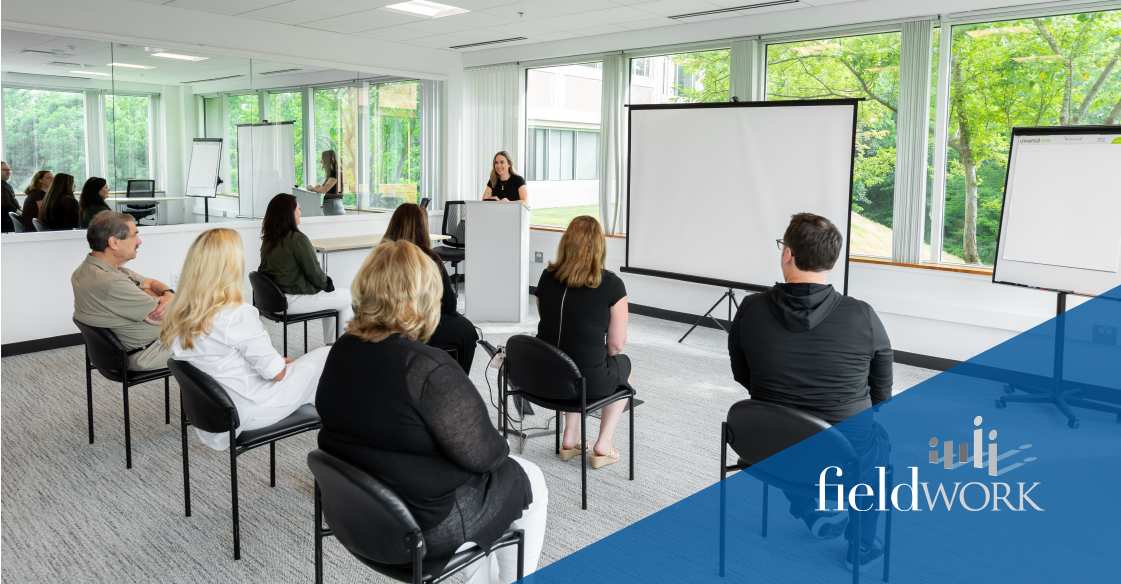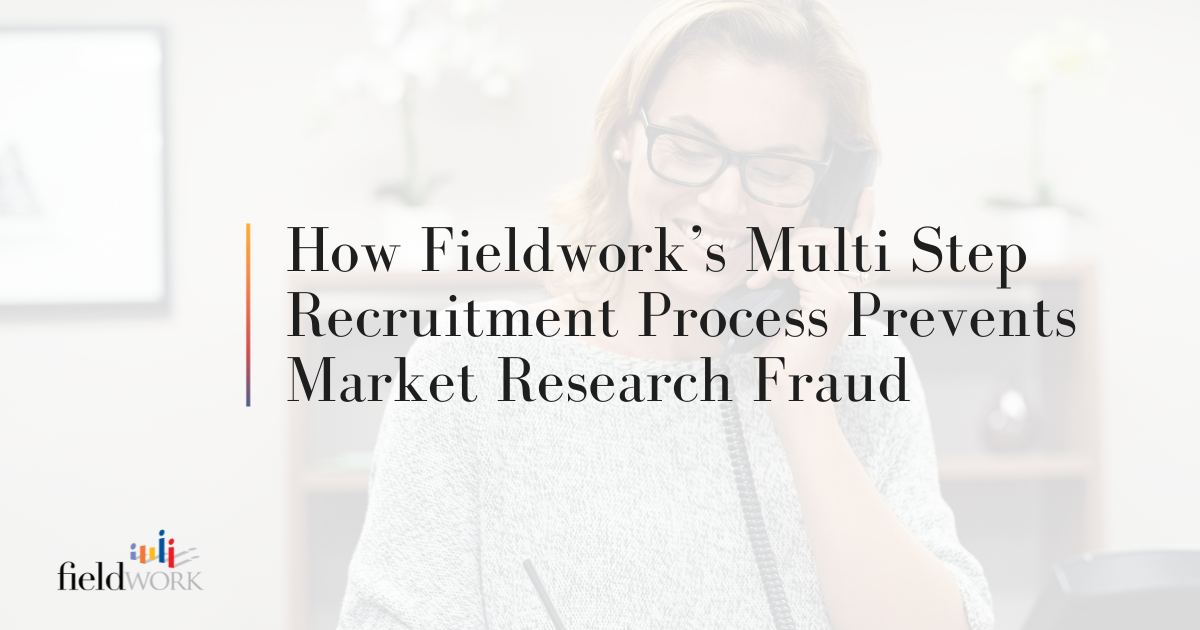What is human factors testing?
Human factors testing examines how the user, whether patient or health care provider (HCP), interprets and uses a medical device. Do they read the directions? Are the instructions clear? Do they know how to operate and store the device properly?
As the FDA articulates, medical device testing aims to eliminate risk. The formative (early development) and the validation (summative) phases are essential. Putting the prototype in the hands of users early on leads to improved design. In the validation phase, manufacturers can address minor issues before FDA approval.

But how do you guarantee you are conducting outstanding research that fulfills all FDA standards in all phases of research?
Here are five top considerations:
1. Concentrate on Compliance and Utilize Expert Partners for the Rest
As medical device consultants and human factors researchers know, there is much to juggle to meet FDA compliance. You have stakeholders to coordinate, prototypes, device instruction drafts, and detailed documentation to submit. So, most human factors scientists and researchers discover that collaborating with a trusted research partner allows them to concentrate on the investigation process. With your undivided attention, you can zero in on insights and FDA guidelines. At the same time, your partner keeps attentive to vetting HCPs and the right patient users for your human factors testing. The partner can facilitate coordination and facility arrangements as well.
2. Find the Right Users
First and foremost, you need the right users who qualify. The FDA often requires specific participant parameters, for example, different ages, gender-mix, device familiarity and those with dexterity issues, to evaluate the product. Finding a partner that has a broad reach with recruiting resources that include patients, caregivers and a wide variety of HCPs such as physicians, surgeons and nurses.
Sometimes human factors testing requires feedback from low-incidence populations that may be geographically spread out. An experienced market research partner will know the facts and statistics on these medical populations. Choose a partner that will provide solutions – such as dividing the research across multiple markets, increasing incentives, or adjusting the schedule.
Keeping track of the quotas is one anxiety you do not need when running a usability study. It’s important to have all screening criteria on time to confirm that the project is on track. If there is any hiccup in the prototype process, calling respondents to reschedule can be troublesome. Partnering with an experienced medical market research vendor that can act as a liaison between the client and respondents and that communicate daily with clients, send complete status updates, and help manage logistics.
3. Provide a Good Mix of Users
It is a best practice and part of FDA guidance to vary your users by education level, age, physical limitations, health literacy, and mental and sensory variations. Knowing the entire spectrum of users helps create devices and pharmaceuticals that are safer. A broad range of users is needed to:
- Review the instructions
- Move through the instructional steps
- Physically handle the device and manipulate the features
- Respond to error messages or react to maintenance features
Utilizing a medical market research recruitment partner that can leverage their human factors resources and experience to optimize the variety of study participants and ensure they show. As human factors researchers know, FDA has stringent requirements and partners with an experienced market research services provider that is knowledgeable and flexible.
4. High-Realism Scenarios
The Center for Medical Simulation, Harvard’s prestigious healthcare simulation training center, advises that you not only create a “representative” environment but one that provides a high-realism scenario. For example, suppose a clinician typically uses a particular device in a hospital setting. In that case, props like a patient bed, some monitoring equipment, and a hospital-style chair will replicate the situation better and provide more credible data. Noise levels also should be simulated if possible. If a patient uses a medical device more often in a home situation, you may recreate that setting, using furniture and props that would typically be in a home bedroom or living room.
It’s important to find the right partner that understands the complexities of medical simulation and is exceptionally flexible and able to provide the right environment.
There are reasons it is ideal to use a market research facility for your medical device testing. A market research facility should be spacious and allow for modifiable configurations. Areas can be customized to fit numerous medical environments. With the use of props and equipment, market research support professionals can create a simulated:
- Hospital room
- Patient room
- Bedroom or living room
- Operating room
- Pharmacy
During the planning phase, open a dialogue with your partner to ensure the room is set to your specifications. Managing this element before you arrive will allow you to concentrate on unpacking prototype devices, setting up instructions, and getting your moderators ready to go.
While on-site, a supportive market research service partner will provide the support that allows you to focus solely on the research. This can include:
- Catering for moderators, stakeholders and participants
- Respondent NDA and compensation management
- On-site tech needs
- Transportation for clients and participants
- Securing and cleaning research space between sessions
- Manage secure recordings
5. Keen Observation
Human factors scientists know observation is the most valuable aspect of testing. Observers watch how users hold the device while also considering the thought process of the user when walking through directions.
An experienced market research partner provides the latest technology, including high-quality video/audio, and has the flexibility to set up a camera directed toward the users’ hands and face to capture those nuances. Using a facility with appropriate video coverage, an audio recording that can be quickly transcribed, and the ability to stream evaluators during the testing process is beneficial.
When product development members cannot attend in person, streaming allows stakeholders, such as design engineers, to observe how users pick up a device and deal with errors. The FDA defines an error as “a situation in which the outcome of device use was different than intended.” This definition says an error is not necessarily a malfunction. It’s not uncommon in testing to revisit videos to catch errors when the device still ultimately works.
With medical device testing, the stakes are high. Partnering with experts in the industry, who know how to recruit the best participants, recreate realistic environments, and communicate with you regularly about the entire process leads to the best results.
The medical industry continues to grow and change every day, and recruiting qualified healthcare professionals, patients and caregivers can make or break your medical research study.
Click below to download our free guide that breaks down expert medical research recruiting.


.jpg?width=400&name=20200722-fw-pillar-page-medical-recruiting-sidebar-r1%20(1).jpg)


